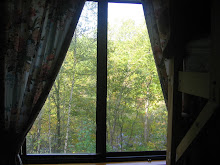The Fourth Bear
The Fourth Bear (2006) by Jasper Fforde is part of his Jack Spratt Investigates series. The first book,
The Big Over Easy concerns the murder of Humpty Dumpty. In this book Detective Jack Spratt (who eats no fat), and Seargent Mary Mary investigate the death of Henrietta Hatchett, aka Goldilocks.
Goldilocks visits three bears and is never seen again. It is just a simple nursery story, or is it??? Nothing is ever straightforward and simple in the
Nursery Crimes Division. Spratt and Mary discover that there was a fourth bear in the tableau between Goldy, Mama Bear, Papa Bear, and Baby Bear. They discover that the company behind the latest theme park is not all that it seems. They discover that
cucumbers are not always a benign tasty lunch accoutrement. They discover love.
What is there not to like about this story? Nothing.
Labels: Fforde, fiction, literature, nursery
The Complete Guide to Houseplants
The Complete Guide to Houseplants: The Easy Way to Choose and Grow Happy, Health Houseplants (2006), edited by Valerie Bradley is part of the Reader’s Digest guide series. This book is illustrated with many full color pictures so one not familiar with the plants written about can get a ready and clear view of what to look for.
I recently decided to have more plants in the house, but I wanted to get plants that were hardy, because I do not have the best track record with houseplants. This great (and very affordable) book has instructions for growing and propagating a wide variety of plants with clear pictorial guides at the head of each entry for light, size and room temp.
This guide is a great single resource for those of us with less than stellar experience growing plants indoors.
Labels: Bradley, environment, nonfiction, plants
The Hidden Forest
When Jon Luoma wrote
The Hidden Forest: The Biography of an Ecosystem (1999), he opened new ways of thinking about our forests for many including me. Luoma writes of many of the living beings that make up a forest, not just the
trees.
Living adult trees are
only one part of what makes a forest a forest. Other integral parts include the dead trees, the young and baby trees, the specialized insects and invertebrates that eat dead trees helping them to decompose and become food for others, the fungi (read truffles!) that work in symbiosis with the trees for mutual growth and health, and so many more beings. Luoma writes of the naturalists who study the forest, specifically
Andrews in Washington, USA, and their scientific discoveries of the interconnectedness of the forest.
I like this book because it brings to the fore the
interconnectedness of
forests, one of our world treasures. The book scientifically explains how important balance is for the living forest and how each is dependent upon others for health and continuance.
Labels: environment, Luoma, nonfiction, trees

